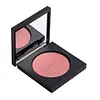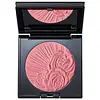What's inside
What's inside
 Key Ingredients
Key Ingredients

 Benefits
Benefits

 Concerns
Concerns

 Ingredients Side-by-side
Ingredients Side-by-side

Mica
Cosmetic ColorantCaprylic/Capric Triglyceride
MaskingSqualane
EmollientZinc Stearate
Cosmetic ColorantLauroyl Lysine
Skin ConditioningC10-18 Triglycerides
EmollientCapryloyl Glycine
CleansingUndecylenoyl Glycine
CleansingButyrospermum Parkii Butter
Skin ConditioningPrunus Amygdalus Dulcis Oil
Skin ConditioningTocopheryl Acetate
AntioxidantDiethylhexyl Syringylidenemalonate
Skin ProtectingSodium Hyaluronate
HumectantIron Oxides
CI 77891
Cosmetic ColorantCI 77742
Cosmetic ColorantCI 15850
Cosmetic ColorantCI 19140
Cosmetic ColorantMica, Caprylic/Capric Triglyceride, Squalane, Zinc Stearate, Lauroyl Lysine, C10-18 Triglycerides, Capryloyl Glycine, Undecylenoyl Glycine, Butyrospermum Parkii Butter, Prunus Amygdalus Dulcis Oil, Tocopheryl Acetate, Diethylhexyl Syringylidenemalonate, Sodium Hyaluronate, Iron Oxides, CI 77891, CI 77742, CI 15850, CI 19140
Ingredients Explained
These ingredients are found in both products.
Ingredients higher up in an ingredient list are typically present in a larger amount.
This ingredient is an emollient, solvent, and texture enhancer. It is considered a skin-softener by helping the skin prevent moisture loss.
It helps thicken a product's formula and makes it easier to spread by dissolving clumping compounds.
Caprylic Triglyceride is made by combining glycerin with coconut oil, forming a clear liquid.
While there is an assumption Caprylic Triglyceride can clog pores due to it being derived from coconut oil, there is no research supporting this.
Learn more about Caprylic/Capric TriglycerideCi 15850 is the pigment color red. It is an azo dye and created synthetically.
Azo dyes need to be thoroughly purified before use. This allows them to be more stable and longer-lasting.
This ingredient is common in foundations, lipsticks, and blushes. This color is described as brown/orangey red.
It has many secondary names such as Red 6 and Red 7. According to a manufacturer, Red 6 usually contains aluminum.
Learn more about CI 15850Mica is a naturally occurring mineral used to add shimmer and color in cosmetics. It can also help improve the texture of a product or give it an opaque, white/silver color.
Serecite is the name for very fine but ragged grains of mica.
This ingredient is often coated with metal oxides like titanium dioxide. Trace amounts of heavy metals may be found in mica, but these metals are not harmful in our personal products.
Mica has been used since prehistoric times throughout the world. Ancient Egyptian, Indian, Greek, Roman, Aztec, and Chinese civilizations have used mica.
Learn more about MicaThis ingredient is a combination of red, black, and yellow iron oxide pigments. This combination of colors is usually found in foundation, because it results in a "skin" color.